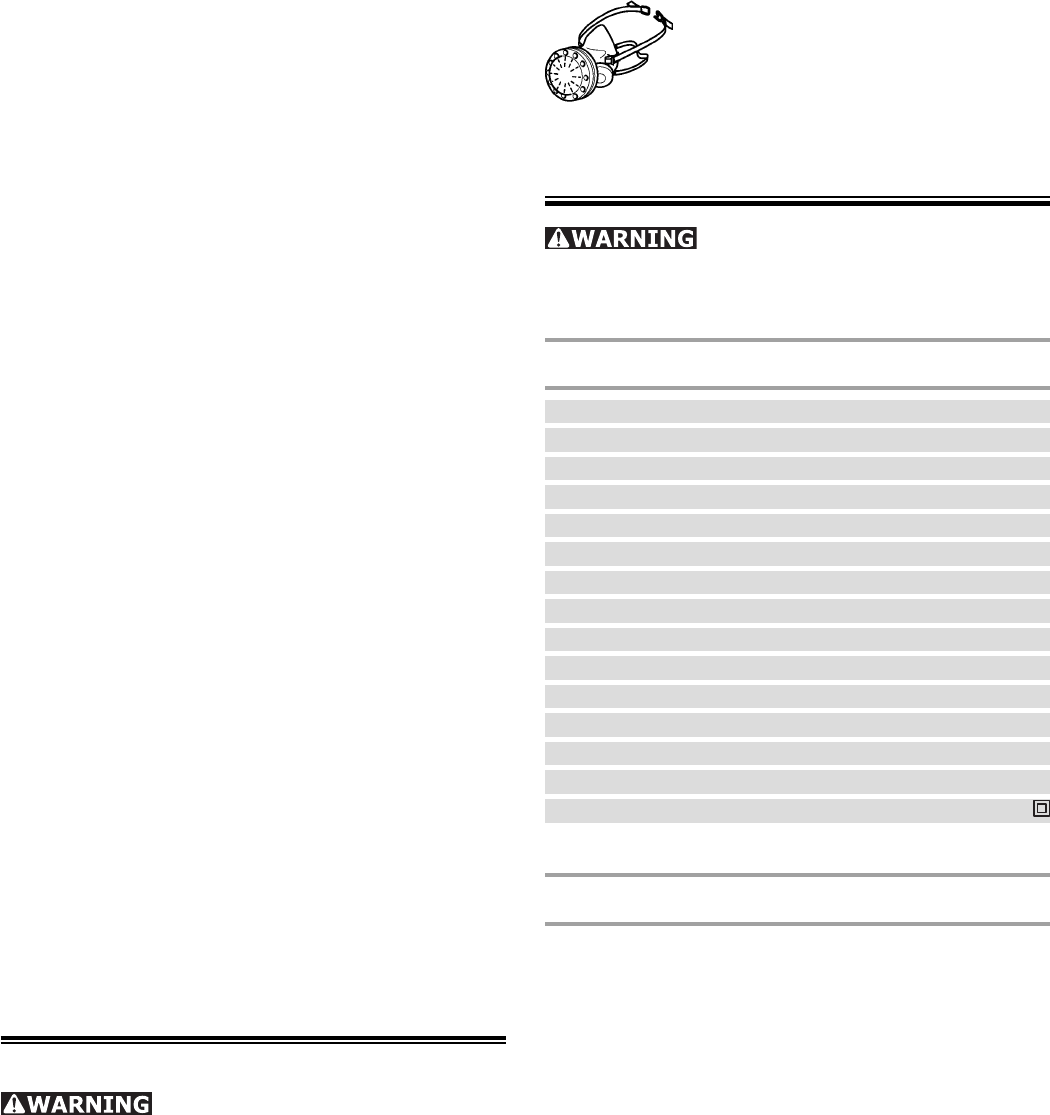
9
the tool from seizing. Corners, sharp edges
or a jump back tend to cause the rotating tool
to catch, thus leading to a loss of control or a
kickback.
Special safety instructions for fi ne sanding
Do not use excessively large sanding discs –
when fi ne sanding. Observe the specifi cations
of the manufacturer when selecting abrasive
discs. A sanding disc that is too large and
protrudes over the sanding pad represents a
cutting injury hazard and can cause catching,
disc tears or kickbacks.
Additional warning notes
Hold the machine fi rmly with both hands and –
assume a stable stance when performing work.
Hold the machine with both hands to guide more
securely.
If potentially explosive or self-igniting dust –
is produced during sanding, the processing
instructions of the material manufacturer must
be observed under all circumstances.
Harmful/toxic dusts can be produced during –
your work (e.g. lead-containing paint, some
types of wood and metal). Contact with these
dusts, especially inhaling them, can represent a
hazard for operating personnel or persons in the
vicinity. Comply with the safety regulations that
apply in your country. Connect the electric power
tool to a suitable extraction system. To protect
your health, wear a P2 protective mask.
Never use machines with a damaged cable. –
Do not touch damaged cables and pull the
plug from the mains power supply if the cable
becomes damaged during work. Damaged
cables increase the risk of electric shock.
Use a maximum of two extension pipes on the –
machine.
Health hazard by dust
Various dust created by power
sanding, sawing, grinding, drilling and other con-
struction activities contains chemicals known (to
the State of California) to cause cancer, birth de-
fects or other reproductive harm. Some examples
of these chemicals are:
Lead from lead-based paints, –
Crystalline silica from bricks and cement and –
other masonry products,
Arsenic and chromium from chemically-treated –
lumber.
The risk from these exposures varies, depending
on how often you do this type of work.
To reduce your exposure to these
chemicals work in a well ventilated
area and use approved safety equip-
ment, such as dust masks that are
specially designed to fi lter out mi-
croscopic particles. Wash hands after
handling.
TO REDUCE THE RISK OF INJURY,
USER MUST READ INSTRUCTION MANUAL.
Technical data
Power 550 W
Rotational speed 340 – 910 rpm
Sanding pad dia. 215 mm (8.5’’)
Abrasive dia. 225 mm (8.9’’)
Tool holder D 13/10
Dust extractor connection dia. 36 mm (1.4’’)
(27 mm (1.06’’))
Length of short version (without extension pipe)
1.10 m (43.3’’)
Length of long version (with extension pipe)
1.60 m ( 63.0’’)
Weight without cable
Short version 3.80 kg (8.4 lbs)
Long version 4.60 kg (10.1 lbs)
Protection class II/
Functional description
The pictures for the functional description are on
a fold-out page at the beginning of the instruction
manual. When reading of the manual you can fold
out this page for having always an overview of the
machine.
[1-1] Sanding head
[1-2] Extension pipe
[1-3] Speed control adjusting wheel
[1-4] On/off switch
[1-5] Suction power adjusting wheel
[1-6] Handle section
[1-7] Abrasive
[1-8] Mains power cable
